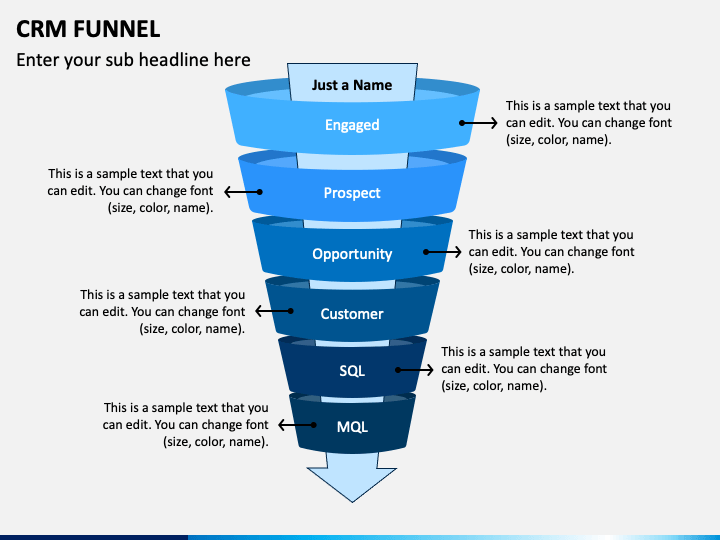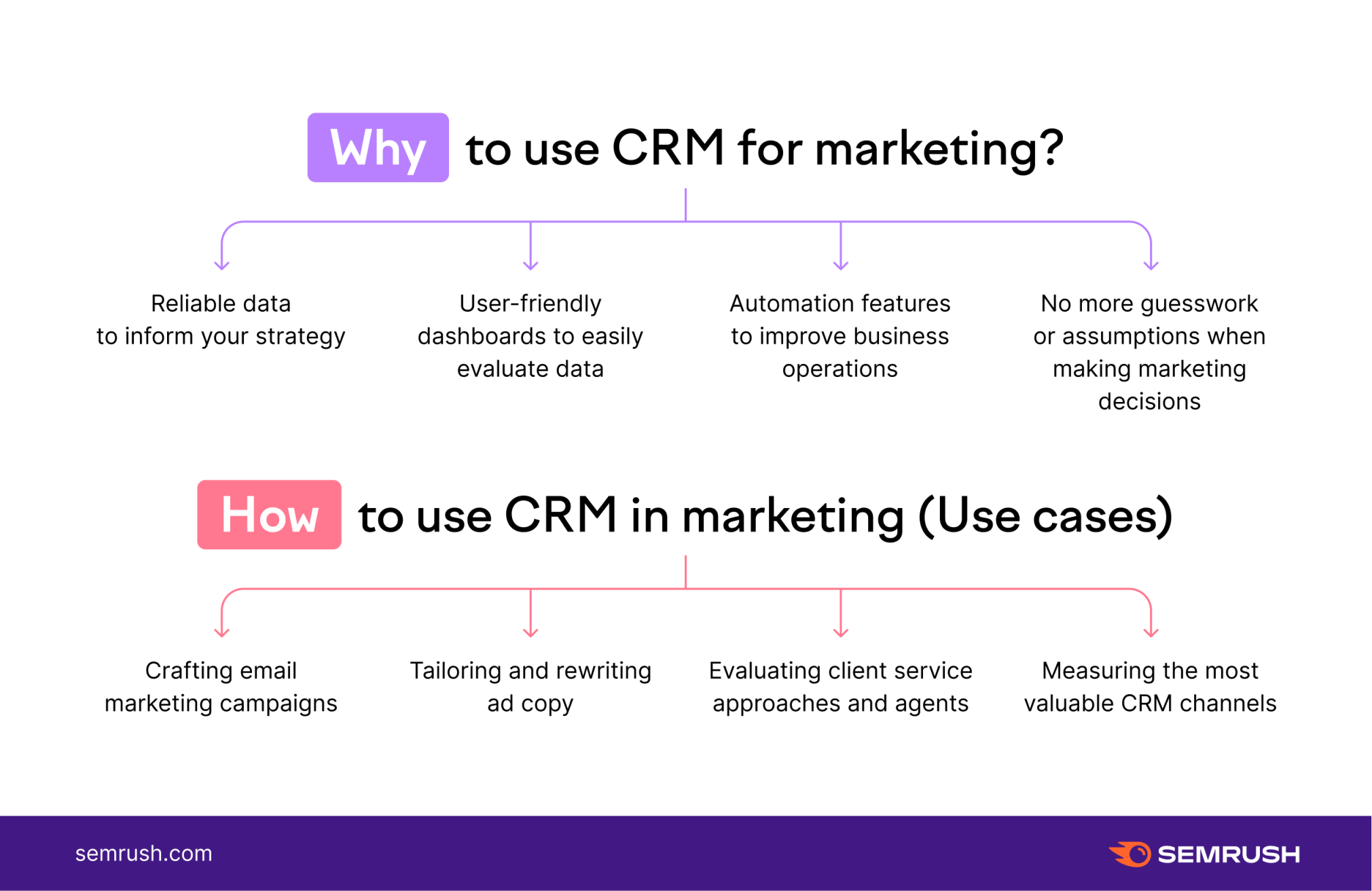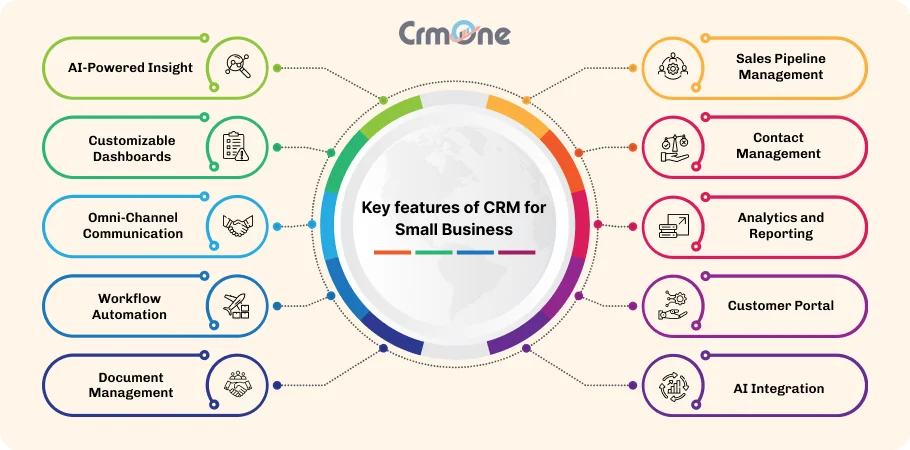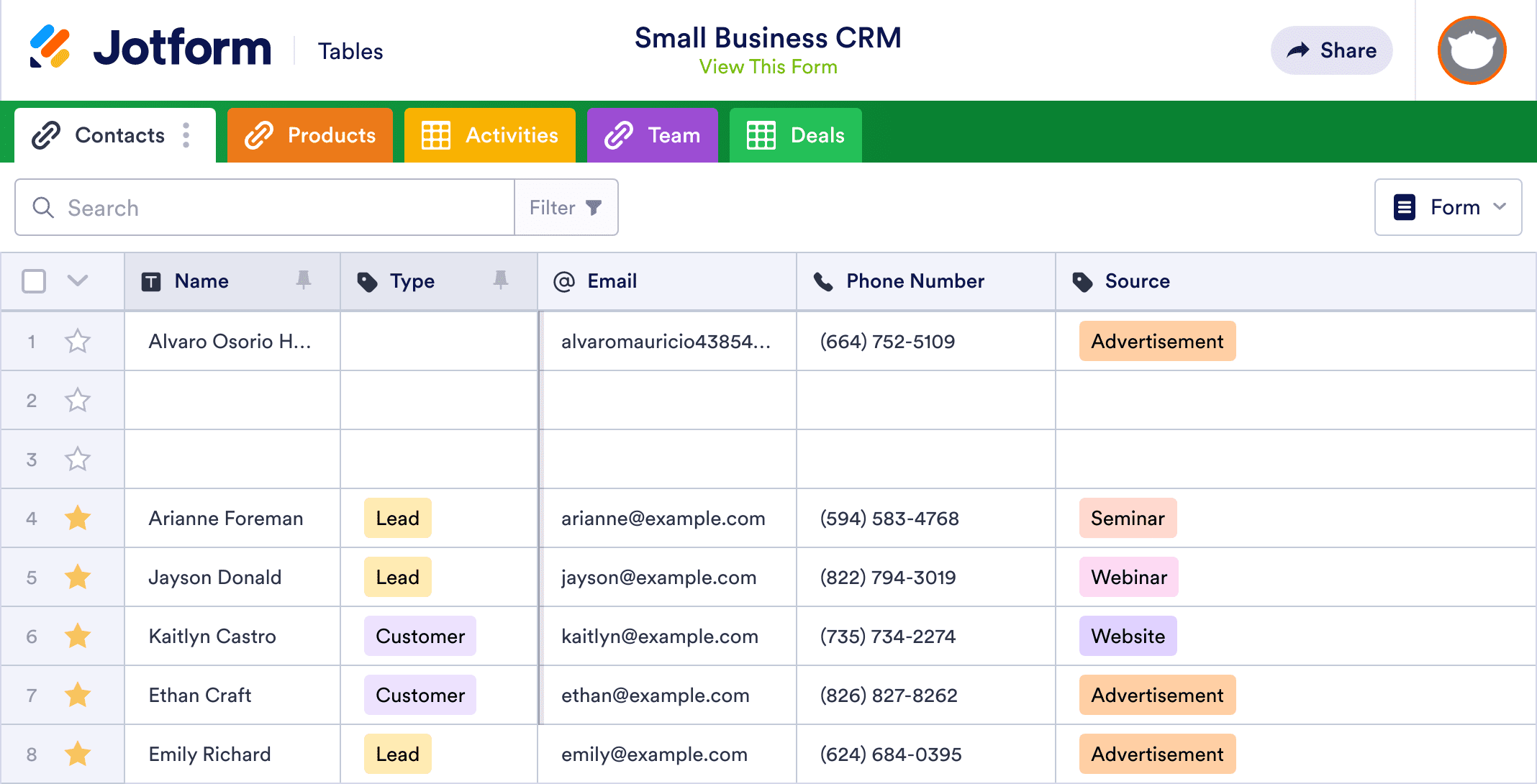
Understanding the CRM Marketing Funnel: Your Roadmap to Customer Success
In the dynamic world of marketing, understanding and leveraging the customer relationship management (CRM) marketing funnel is crucial. It’s more than just a buzzword; it’s a strategic framework that guides potential customers from initial awareness to becoming loyal advocates. This comprehensive guide dives deep into the CRM marketing funnel, providing a step-by-step approach to setup, optimization, and ultimately, achieving remarkable results.
What is a CRM Marketing Funnel?
At its core, the CRM marketing funnel represents the journey a customer takes with your brand. It’s a visual and conceptual model that illustrates the various stages of the customer lifecycle, from initial contact to becoming a repeat customer. Think of it as a roadmap, guiding you on how to nurture leads, convert prospects, and retain customers effectively.
The traditional marketing funnel is often depicted as a funnel shape, with a wide top representing the initial awareness stage and narrowing down as customers progress through the stages. The CRM marketing funnel builds upon this concept, integrating CRM data and insights to personalize customer interactions and improve the overall customer experience.
The Stages of the CRM Marketing Funnel
The CRM marketing funnel typically consists of several key stages, each with its own set of objectives and strategies:
- Awareness: This is the initial stage where potential customers become aware of your brand, product, or service. Marketing efforts in this stage focus on generating visibility and attracting attention.
- Interest: Once potential customers are aware of your brand, the goal is to pique their interest and provide them with valuable information. This stage involves engaging content, targeted advertising, and lead nurturing activities.
- Consideration: In this stage, potential customers evaluate your brand and offerings alongside competitors. They actively research and compare their options.
- Decision: This is the crucial stage where potential customers make a purchase decision. Your goal is to provide them with a seamless and compelling buying experience.
- Retention: After a customer makes a purchase, the focus shifts to retaining them and fostering loyalty. This involves providing excellent customer service, personalized communication, and ongoing value.
- Advocacy: Loyal customers become brand advocates, recommending your products or services to others. This stage is the ultimate goal, as it drives organic growth and builds brand reputation.
Setting Up Your CRM Marketing Funnel: A Step-by-Step Guide
Setting up a CRM marketing funnel requires careful planning and execution. Here’s a step-by-step guide to help you get started:
1. Choose the Right CRM Software
The foundation of your CRM marketing funnel is the CRM software you choose. Select a platform that aligns with your business needs, budget, and technical capabilities. Consider features such as:
- Contact Management: Ability to store and manage customer data effectively.
- Lead Management: Features to track and nurture leads through the funnel.
- Marketing Automation: Tools to automate marketing tasks, such as email campaigns and lead scoring.
- Reporting and Analytics: Capabilities to track key metrics and gain insights into your funnel performance.
- Integration: Compatibility with other tools and platforms you use, such as email marketing software and social media channels.
Popular CRM platforms include Salesforce, HubSpot, Zoho CRM, and Microsoft Dynamics 365. Research and compare different options to find the best fit for your business.
2. Define Your Target Audience
Before you can build an effective CRM marketing funnel, you need to understand your target audience. Define your ideal customer profile, including their demographics, interests, behaviors, and pain points. This will help you tailor your marketing messages and strategies to resonate with your audience.
Consider creating buyer personas, which are semi-fictional representations of your ideal customers. Buyer personas help you visualize your target audience and understand their needs and motivations.
3. Map Your Customer Journey
Map out the customer journey, from initial awareness to becoming a loyal advocate. Identify the touchpoints where customers interact with your brand, such as your website, social media channels, email, and customer service. This will help you understand the customer experience and identify areas for improvement.
Create a visual representation of the customer journey, including the stages of the funnel, the actions customers take at each stage, and the marketing activities you’ll use to engage them.
4. Create Compelling Content
Content is king (and queen!) in the CRM marketing funnel. Create high-quality, engaging content that resonates with your target audience at each stage of the funnel. This includes:
- Awareness Stage: Blog posts, social media updates, infographics, and videos to generate awareness and attract attention.
- Interest Stage: Ebooks, webinars, case studies, and white papers to provide valuable information and educate your audience.
- Consideration Stage: Product demos, comparison guides, and customer testimonials to help potential customers evaluate their options.
- Decision Stage: Special offers, promotions, and a seamless buying experience to encourage purchases.
- Retention Stage: Personalized emails, exclusive content, and loyalty programs to foster customer loyalty.
5. Implement Marketing Automation
Marketing automation is essential for streamlining your CRM marketing funnel and improving efficiency. Use your CRM software to automate tasks such as:
- Lead Scoring: Assigning scores to leads based on their behavior and engagement.
- Email Marketing: Sending targeted email campaigns to nurture leads and engage customers.
- Workflow Automation: Automating repetitive tasks, such as sending follow-up emails and updating customer records.
- Social Media Management: Scheduling and posting social media updates.
6. Track and Analyze Your Results
Continuously track and analyze your results to identify areas for improvement. Use your CRM software’s reporting and analytics features to monitor key metrics such as:
- Website Traffic: Track the number of visitors to your website and the pages they view.
- Lead Generation: Monitor the number of leads generated and their sources.
- Conversion Rates: Track the percentage of leads that convert into customers.
- Customer Acquisition Cost (CAC): Calculate the cost of acquiring a new customer.
- Customer Lifetime Value (CLTV): Estimate the revenue generated by a customer over their lifetime.
Use these insights to optimize your marketing efforts, refine your content, and improve the customer experience.
7. Optimize and Iterate
The CRM marketing funnel is not a set-it-and-forget-it project. Continuously optimize and iterate your strategies based on your results. Experiment with different content formats, marketing channels, and automation workflows to find what works best for your business.
Regularly review your customer journey, update your buyer personas, and refine your CRM marketing funnel to stay ahead of the competition and meet the evolving needs of your customers.
Advanced Strategies for CRM Marketing Funnel Optimization
Once you have a basic CRM marketing funnel in place, you can implement advanced strategies to further optimize your results. Here are some ideas:
Personalization
Personalization is key to creating a positive customer experience. Use your CRM data to personalize your marketing messages, content, and offers. This includes:
- Personalized Email Campaigns: Segment your audience and send targeted emails based on their interests, behaviors, and demographics.
- Dynamic Content: Display personalized content on your website based on a visitor’s past interactions.
- Product Recommendations: Suggest products based on a customer’s purchase history and browsing behavior.
Lead Scoring and Nurturing
Implement a lead scoring system to prioritize your leads and focus your marketing efforts on those who are most likely to convert. Nurture leads through the funnel with targeted content and personalized communication. This includes:
- Lead Scoring: Assign scores to leads based on their engagement and behavior.
- Lead Nurturing Campaigns: Create automated email sequences to nurture leads and move them through the funnel.
- Segmentation: Segment your leads based on their interests and demographics.
Omnichannel Marketing
Integrate your marketing efforts across multiple channels to create a seamless customer experience. This includes:
- Email Marketing: Send targeted email campaigns to nurture leads and engage customers.
- Social Media Marketing: Use social media to generate awareness, engage with customers, and drive traffic to your website.
- Paid Advertising: Run targeted advertising campaigns on search engines and social media platforms.
- Website Personalization: Personalize your website content based on a visitor’s past interactions.
Customer Segmentation
Divide your customer base into segments based on their characteristics, behaviors, and preferences. This allows you to tailor your marketing messages and offers to specific groups of customers. This includes:
- Demographic Segmentation: Segmenting customers based on age, gender, location, and other demographic factors.
- Behavioral Segmentation: Segmenting customers based on their purchase history, website activity, and engagement with your marketing materials.
- Psychographic Segmentation: Segmenting customers based on their values, interests, and lifestyles.
A/B Testing
A/B testing is a powerful technique for optimizing your marketing efforts. Test different versions of your content, email subject lines, and landing pages to see which ones perform best. This includes:
- Testing Email Subject Lines: Experiment with different subject lines to see which ones get the highest open rates.
- Testing Content: Test different versions of your content to see which ones generate the most engagement.
- Testing Landing Pages: Test different versions of your landing pages to see which ones convert the most visitors into leads or customers.
Common Challenges and Solutions
While setting up and optimizing a CRM marketing funnel can be highly rewarding, it can also present some challenges. Here are some common challenges and solutions:
Data Silos
Data silos occur when customer data is stored in different systems and not integrated. This can make it difficult to get a complete view of the customer and personalize your marketing efforts. Solutions include:
- Choose a CRM platform that integrates with other systems.
- Implement data integration tools to connect your different systems.
- Establish data governance policies to ensure data quality and consistency.
Lack of Alignment Between Sales and Marketing
When sales and marketing teams are not aligned, it can lead to inefficiencies and missed opportunities. Solutions include:
- Establish clear communication channels between sales and marketing.
- Define shared goals and metrics to align the teams.
- Implement a service level agreement (SLA) to outline the responsibilities of each team.
Poor Data Quality
Poor data quality can lead to inaccurate insights and ineffective marketing campaigns. Solutions include:
- Implement data cleansing processes to remove duplicate and inaccurate data.
- Establish data validation rules to ensure data accuracy.
- Train your team on data entry best practices.
Lack of Resources
Setting up and optimizing a CRM marketing funnel can require significant resources, including time, budget, and expertise. Solutions include:
- Prioritize your efforts and focus on the most important tasks.
- Outsource tasks to external agencies or consultants.
- Invest in training for your team.
Measuring Success: Key Metrics to Track
To effectively manage and optimize your CRM marketing funnel, it’s crucial to track key metrics. These metrics provide valuable insights into the performance of your funnel and help you identify areas for improvement. Here are some of the most important metrics to monitor:
- Website Traffic: This metric measures the number of visitors to your website. Tracking website traffic helps you assess the effectiveness of your awareness-stage marketing efforts.
- Lead Generation Rate: This metric tracks the percentage of website visitors who become leads (e.g., by filling out a form or subscribing to a newsletter). It indicates the effectiveness of your lead capture strategies.
- Lead-to-Customer Conversion Rate: This crucial metric measures the percentage of leads who convert into paying customers. It reflects the overall effectiveness of your funnel in converting leads into sales.
- Customer Acquisition Cost (CAC): CAC represents the total cost of acquiring a new customer. It includes marketing expenses, sales salaries, and other related costs. Monitoring CAC helps you assess the efficiency of your marketing and sales efforts.
- Customer Lifetime Value (CLTV): CLTV estimates the total revenue a customer will generate over their relationship with your business. It provides insights into the long-term value of your customers and helps you prioritize customer retention efforts.
- Customer Retention Rate: This metric measures the percentage of customers who remain loyal to your business over a specific period. It highlights the effectiveness of your customer retention strategies.
- Churn Rate: The churn rate indicates the percentage of customers who stop doing business with your company. Monitoring churn helps you identify potential issues with your products, services, or customer experience.
- Return on Investment (ROI): ROI measures the profitability of your marketing campaigns and overall funnel strategy. Tracking ROI ensures that your marketing investments are generating a positive return.
- Conversion Rates by Stage: Analyzing conversion rates at each stage of the funnel helps you identify bottlenecks and areas where customers are dropping off.
- Email Open and Click-Through Rates: These metrics measure the engagement with your email marketing campaigns, indicating the effectiveness of your content and messaging.
By regularly tracking these metrics, you can gain valuable insights into your CRM marketing funnel’s performance, identify areas for improvement, and make data-driven decisions to optimize your results.
The Future of CRM Marketing Funnels
The CRM marketing funnel continues to evolve as technology advances and customer expectations change. Staying ahead of the curve requires a forward-thinking approach and a willingness to embrace new strategies. Here are some emerging trends shaping the future of CRM marketing funnels:
Artificial Intelligence (AI) and Machine Learning (ML)
AI and ML are transforming CRM marketing funnels by enabling:
- Personalized Recommendations: AI algorithms can analyze customer data to provide highly personalized product recommendations and content suggestions.
- Predictive Analytics: ML can predict customer behavior, such as the likelihood of a purchase or churn, allowing for proactive marketing interventions.
- Automated Chatbots: AI-powered chatbots can provide instant customer support, answer questions, and guide customers through the funnel.
- Intelligent Lead Scoring: AI can analyze lead data to identify the most promising leads and prioritize marketing efforts accordingly.
Hyper-Personalization
Customers expect personalized experiences. CRM marketing funnels are moving towards hyper-personalization, which involves tailoring every interaction to individual customer preferences and behaviors. This includes:
- Dynamic Content: Displaying content that changes based on a customer’s past interactions and preferences.
- Personalized Product Recommendations: Offering product recommendations based on a customer’s browsing history, purchase history, and other data.
- Personalized Email Campaigns: Sending highly targeted email campaigns that address individual customer needs and interests.
Voice Search Optimization
Voice search is becoming increasingly popular, and CRM marketing funnels need to adapt. This involves:
- Optimizing Content for Voice Search: Creating content that answers specific questions and is easy to understand.
- Using Conversational Language: Writing content in a conversational tone to match how people speak.
- Focusing on Local SEO: Optimizing your online presence for local searches, as voice search is often used to find nearby businesses.
Customer Data Platforms (CDPs)
CDPs are playing a crucial role in CRM marketing funnels by:
- Centralizing Customer Data: CDPs collect and unify customer data from various sources, providing a single view of the customer.
- Enhancing Personalization: CDPs enable marketers to create highly personalized experiences by leveraging a comprehensive understanding of customer data.
- Improving Marketing Automation: CDPs integrate with marketing automation platforms to streamline and optimize marketing workflows.
The Rise of Privacy and Data Security
With increasing concerns about data privacy, CRM marketing funnels need to prioritize data security and transparency. This includes:
- Complying with Data Privacy Regulations: Ensuring compliance with regulations such as GDPR and CCPA.
- Being Transparent with Customers: Clearly communicating how you collect and use customer data.
- Implementing Robust Data Security Measures: Protecting customer data from unauthorized access and breaches.
Conclusion: Embrace the CRM Marketing Funnel for Sustainable Growth
The CRM marketing funnel is an indispensable framework for any business seeking to attract, engage, and retain customers. By understanding the stages of the funnel, implementing effective strategies, and continuously optimizing your approach, you can transform your marketing efforts into a powerful engine for growth. This guide has provided a comprehensive overview of setting up, optimizing, and measuring the success of your CRM marketing funnel. Remember to choose the right CRM software, define your target audience, map your customer journey, create compelling content, implement marketing automation, track and analyze your results, and optimize your strategy. Embrace the power of personalization, lead scoring, omnichannel marketing, and A/B testing to achieve remarkable results. By staying informed about emerging trends and adapting to the evolving needs of your customers, you can build a sustainable CRM marketing funnel that drives long-term success. So, take action today, and embark on your journey to master the CRM marketing funnel and unlock the full potential of your marketing efforts.


